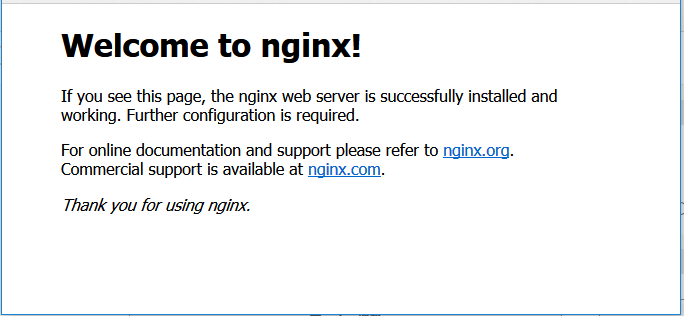こんにちは。
ZOZOテクノロジーズ 開発部の杉山です。
nginxのdockerイメージをプライベートリポジトリに確保しておく必要があったので、
nginx公式からDockerfileで作りました。
docker-hubに公式イメージがあるとはいえ、サービスを運営するうえでは、開発の時点での「immutableなイメージ」をプライベートリポジトリで確保して使用するというのは、安定運用やセキュリティー的にもよいのでは思います。
手順
公式ページを参考にDockerfileを作成します。
今回は1.15.8-alpineを使用します。
Dockerfileを作成します。
Dockerfile
FROM alpine:3.9
LABEL maintainer="NGINX Docker Maintainers <docker-maint@nginx.com>"
ENV NGINX_VERSION 1.15.8
RUN GPG_KEYS=B0F4253373F8F6F510D42178520A9993A1C052F8 \
&& CONFIG="\
--prefix=/etc/nginx \
--sbin-path=/usr/sbin/nginx \
--modules-path=/usr/lib/nginx/modules \
--conf-path=/etc/nginx/nginx.conf \
--error-log-path=/var/log/nginx/error.log \
--http-log-path=/var/log/nginx/access.log \
--pid-path=/var/run/nginx.pid \
--lock-path=/var/run/nginx.lock \
--http-client-body-temp-path=/var/cache/nginx/client_temp \
--http-proxy-temp-path=/var/cache/nginx/proxy_temp \
--http-fastcgi-temp-path=/var/cache/nginx/fastcgi_temp \
--http-uwsgi-temp-path=/var/cache/nginx/uwsgi_temp \
--http-scgi-temp-path=/var/cache/nginx/scgi_temp \
--user=nginx \
--group=nginx \
--with-http_ssl_module \
--with-http_realip_module \
--with-http_addition_module \
--with-http_sub_module \
--with-http_dav_module \
--with-http_flv_module \
--with-http_mp4_module \
--with-http_gunzip_module \
--with-http_gzip_static_module \
--with-http_random_index_module \
--with-http_secure_link_module \
--with-http_stub_status_module \
--with-http_auth_request_module \
--with-http_xslt_module=dynamic \
--with-http_image_filter_module=dynamic \
--with-http_geoip_module=dynamic \
--with-threads \
--with-stream \
--with-stream_ssl_module \
--with-stream_ssl_preread_module \
--with-stream_realip_module \
--with-stream_geoip_module=dynamic \
--with-http_slice_module \
--with-mail \
--with-mail_ssl_module \
--with-compat \
--with-file-aio \
--with-http_v2_module \
" \
&& addgroup -S nginx \
&& adduser -D -S -h /var/cache/nginx -s /sbin/nologin -G nginx nginx \
&& apk add --no-cache --virtual .build-deps \
gcc \
libc-dev \
make \
openssl-dev \
pcre-dev \
zlib-dev \
linux-headers \
curl \
gnupg1 \
libxslt-dev \
gd-dev \
geoip-dev \
&& curl -fSL https://nginx.org/download/nginx-$NGINX_VERSION.tar.gz -o nginx.tar.gz \
&& curl -fSL https://nginx.org/download/nginx-$NGINX_VERSION.tar.gz.asc -o nginx.tar.gz.asc \
&& export GNUPGHOME="$(mktemp -d)" \
&& found=''; \
for server in \
ha.pool.sks-keyservers.net \
hkp://keyserver.ubuntu.com:80 \
hkp://p80.pool.sks-keyservers.net:80 \
pgp.mit.edu \
; do \
echo "Fetching GPG key $GPG_KEYS from $server"; \
gpg --keyserver "$server" --keyserver-options timeout=10 --recv-keys "$GPG_KEYS" && found=yes && break; \
done; \
test -z "$found" && echo >&2 "error: failed to fetch GPG key $GPG_KEYS" && exit 1; \
gpg --batch --verify nginx.tar.gz.asc nginx.tar.gz \
&& rm -rf "$GNUPGHOME" nginx.tar.gz.asc \
&& mkdir -p /usr/src \
&& tar -zxC /usr/src -f nginx.tar.gz \
&& rm nginx.tar.gz \
&& cd /usr/src/nginx-$NGINX_VERSION \
&& ./configure $CONFIG --with-debug \
&& make -j$(getconf _NPROCESSORS_ONLN) \
&& mv objs/nginx objs/nginx-debug \
&& mv objs/ngx_http_xslt_filter_module.so objs/ngx_http_xslt_filter_module-debug.so \
&& mv objs/ngx_http_image_filter_module.so objs/ngx_http_image_filter_module-debug.so \
&& mv objs/ngx_http_geoip_module.so objs/ngx_http_geoip_module-debug.so \
&& mv objs/ngx_stream_geoip_module.so objs/ngx_stream_geoip_module-debug.so \
&& ./configure $CONFIG \
&& make -j$(getconf _NPROCESSORS_ONLN) \
&& make install \
&& rm -rf /etc/nginx/html/ \
&& mkdir /etc/nginx/conf.d/ \
&& mkdir -p /usr/share/nginx/html/ \
&& install -m644 html/index.html /usr/share/nginx/html/ \
&& install -m644 html/50x.html /usr/share/nginx/html/ \
&& install -m755 objs/nginx-debug /usr/sbin/nginx-debug \
&& install -m755 objs/ngx_http_xslt_filter_module-debug.so /usr/lib/nginx/modules/ngx_http_xslt_filter_module-debug.so \
&& install -m755 objs/ngx_http_image_filter_module-debug.so /usr/lib/nginx/modules/ngx_http_image_filter_module-debug.so \
&& install -m755 objs/ngx_http_geoip_module-debug.so /usr/lib/nginx/modules/ngx_http_geoip_module-debug.so \
&& install -m755 objs/ngx_stream_geoip_module-debug.so /usr/lib/nginx/modules/ngx_stream_geoip_module-debug.so \
&& ln -s ../../usr/lib/nginx/modules /etc/nginx/modules \
&& strip /usr/sbin/nginx* \
&& strip /usr/lib/nginx/modules/*.so \
&& rm -rf /usr/src/nginx-$NGINX_VERSION \
\
# Bring in gettext so we can get `envsubst`, then throw
# the rest away. To do this, we need to install `gettext`
# then move `envsubst` out of the way so `gettext` can
# be deleted completely, then move `envsubst` back.
&& apk add --no-cache --virtual .gettext gettext \
&& mv /usr/bin/envsubst /tmp/ \
\
&& runDeps="$( \
scanelf --needed --nobanner --format '%n#p' /usr/sbin/nginx /usr/lib/nginx/modules/*.so /tmp/envsubst \
| tr ',' '\n' \
| sort -u \
| awk 'system("[ -e /usr/local/lib/" $1 " ]") == 0 { next } { print "so:" $1 }' \
)" \
&& apk add --no-cache --virtual .nginx-rundeps $runDeps \
&& apk del .build-deps \
&& apk del .gettext \
&& mv /tmp/envsubst /usr/local/bin/ \
\
# Bring in tzdata so users could set the timezones through the environment
# variables
&& apk add --no-cache tzdata \
\
# forward request and error logs to docker log collector
&& ln -sf /dev/stdout /var/log/nginx/access.log \
&& ln -sf /dev/stderr /var/log/nginx/error.log
COPY nginx.conf /etc/nginx/nginx.conf
COPY nginx.vh.default.conf /etc/nginx/conf.d/default.conf
EXPOSE 80
STOPSIGNAL SIGTERM
CMD ["nginx", "-g", "daemon off;"]
設定ファイルを作成します。
nginx.conf
user nginx;
worker_processes 1;
error_log /var/log/nginx/error.log warn;
pid /var/run/nginx.pid;
events {
worker_connections 1024;
}
http {
include /etc/nginx/mime.types;
default_type application/octet-stream;
log_format main '$remote_addr - $remote_user [$time_local] "$request" '
'$status $body_bytes_sent "$http_referer" '
'"$http_user_agent" "$http_x_forwarded_for"';
access_log /var/log/nginx/access.log main;
sendfile on;
#tcp_nopush on;
keepalive_timeout 65;
#gzip on;
include /etc/nginx/conf.d/*.conf;
}
nginx.vh.default.conf
server {
listen 80;
server_name localhost;
#charset koi8-r;
#access_log /var/log/nginx/host.access.log main;
location / {
root /usr/share/nginx/html;
index index.html index.htm;
}
#error_page 404 /404.html;
# redirect server error pages to the static page /50x.html
#
error_page 500 502 503 504 /50x.html;
location = /50x.html {
root /usr/share/nginx/html;
}
# proxy the PHP scripts to Apache listening on 127.0.0.1:80
#
#location ~ \.php$ {
# proxy_pass http://127.0.0.1;
#}
# pass the PHP scripts to FastCGI server listening on 127.0.0.1:9000
#
#location ~ \.php$ {
# root html;
# fastcgi_pass 127.0.0.1:9000;
# fastcgi_index index.php;
# fastcgi_param SCRIPT_FILENAME /scripts$fastcgi_script_name;
# include fastcgi_params;
#}
# deny access to .htaccess files, if Apache's document root
# concurs with nginx's one
#
#location ~ /\.ht {
# deny all;
#}
}
ビルドする
タグをつけて「nginx」という名前のイメージをビルドします。
docker build -t nginx:v.1.15.8 ./
イメージができたか確認
$ docker images
REPOSITORY TAG IMAGE ID CREATED SIZE
nginx 1.15.8 xxxxxxxxx 1 hour ago 109MB
基本のイメージができました。
コンテナを起動して確認してみる
dockerコマンドで起動
docker run -d -it --name nginx -p 8080:80 --hostname localhost nginx:v.1.15.8
起動したらhttp://localhost:8080/へアクセスしてみましょう。
起動できました。
docker-composeで起動してみる(最低限の設定)
docker-composeファイルを作成します。
docker-compose.yml
version: "2"
services:
web:
build: .
ports:
- "8080:80"
実行してみます。
$ docker-compose up -d
起動したらhttp://localhost:8080/へアクセスしてみましょう。
こちらでも起動できました。
AZURE ACR(Azure Container Registory)にプッシュする
AzureCLIとdockerコマンド使って、ご自身のACRリポジトリにプッシュしましょう。
ローカルでビルドしたイメージを、ACRの階層に合わせたエイリアスを作成してプッシュします。
実際の手順を、簡単なシェルスクリプトにすると、ワンぽちできるので便利です。
docker-push.sh
# !/usr/bin/env bash
echo "-----------------------------------------------------";
echo "-----------------------------------------------------";
echo "-------- Azure ACR Docker Push Shell -------";
echo "-------- --------------------------------- -------";
echo "Please enter image tag. e.g.[v.0.0.1] :"
read tag
if [ -z $tag ] ; then
echo "stdin error"
exit
else
#acrログイン
az login
az acr login --resource-group <YOUR_ACR_RESOURECE_GROUP> --name <YOUR_ACR_REGISTORY_NAME>
#イメージ作成
docker build -t nginx:${tag} ./
#イメージができたことを確認
docker images
#エイリアス作成
docker tag nginx:${tag} <YOUR_ACR_REGISTORY_NAME>.azurecr.io/nginx:${tag}
#エイリアスができたことを確認
docker images
#プッシュ
docker push <YOUR_ACR_REGISTORY_NAME>.azurecr.io/nginx:${tag}
fi
実行します。
$ ./docker-push.sh
-----------------------------------------------------
-----------------------------------------------------
-------- Azure ACR Docker Push Shell -------
-------- --------------------------------- -------
Please enter image tag. e.g.[v.0.0.1] :
v.1.15.8
タグを入力してenterを叩き、ブラウザでaz login認証をすると、どかどかと処理が走って、プッシュ完了します。
成功したら、Azureポータルで確認しましょう。
以上。
